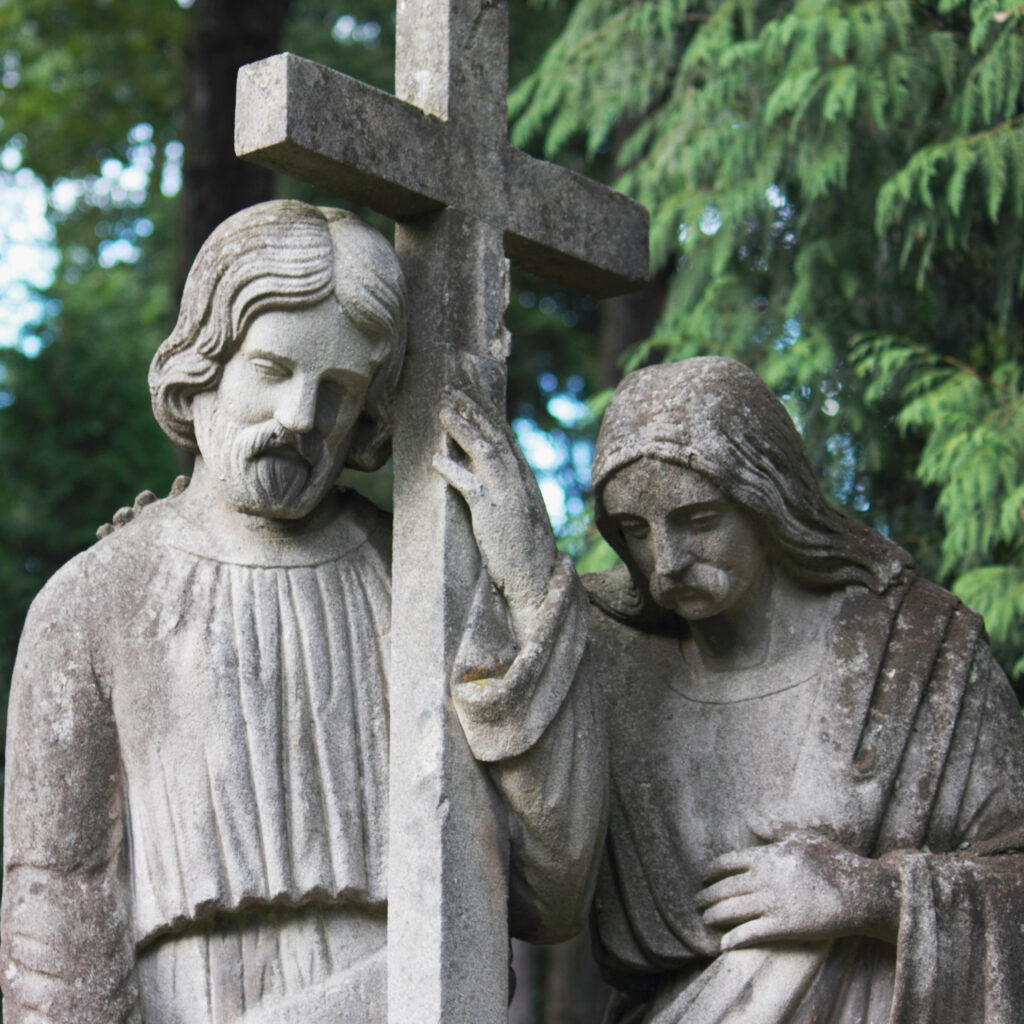June 29 is set aside in liturgical tradition to honor the apostles Peter and Paul. Why?
The New Testament does not describe the deaths of any of the apostles except James, the brother of John (Acts 12:2). However, early tradition tells us that the apostles Peter and Paul were both executed by order of the emperor Nero, probably between AD 64 and 68.
According to Eusebius (AD 265–339), the great church historian, Peter was made to watch his wife’s execution first: “When the blessed Peter saw his own wife led out to die, he rejoiced because of her summons and her return home, and called to her very encouragingly and comfortingly, addressing her by name, and saying, ‘O thou, remember the Lord.’ Such was the marriage of the blessed, and their perfect disposition toward those dearest to them” (Ecclesiastical History 3.30.2).
His own execution followed: “He was crucified head-downwards; for he had requested that he might suffer in this way” (EH 3.1.2). An early source describes his death this way:
Peter, having come to the cross, said: Since my Lord Jesus Christ, who came down from the heaven upon the earth, was raised upon the cross upright, and He has deigned to call to heaven me, who am of the earth, my cross ought to be fixed downmost, so as to direct my feet towards heaven; for I am not worthy to be crucified like my Lord. Then, having reversed the cross, they nailed his feet up.
—Acts of the Holy Apostles Peter and Paul, Ante-Nicene Fathers 8.484
Paul, as a Roman citizen (Acts 22:28), was likely executed by beheading, also by order of Nero.
Visiting the sites of their executions
As early as the year 258, there is evidence of an already lengthy tradition of celebrating both apostles on June 29. In a sermon in the year 395, St. Augustine said of the two, “Both apostles share the same feast day, for these two were one; and even though they suffered on different days, they were as one. Peter went first, and Paul followed.”
A church was built over the remains of Peter in Rome; it was then replaced by a structure built in the time of the Emperor Constantine that eventually became the Vatican as we know it today. I have been in the catacombs beneath the Vatican and stood within twenty or so feet of what is believed to be the grave of the great apostle.
A church was likewise built in the fifth century at the traditional location of Paul’s beheading. A sixteenth-century structure called the Church of Saint Paul at the Three Fountains stands at this location today. Inside is a pillar where the apostle was said to have been bound before being martyred. I have visited this site as well.
Emulating their courage
As a Baptist cultural theologian, why did I want to see these sites venerated by more liturgical Christians? Why am I writing today about a tradition celebrated by more liturgical churches?
One answer is that we are all part of the body of Christ (1 Corinthians 12:27) and will join “a great multitude that no one could number, from every nation, from all tribes and peoples and languages” in heaven one day (Revelation 7:9).
Another is that our liturgical sisters and brothers are right: remembering the faithful courage of Peter and Paul encourages us to serve our Lord with sacrificial courage. Either of the apostles could have stopped preaching the gospel and preserved their lives. Both chose to die for the One who died for them.
In his sermon on Peter and Paul, St. Augustine stated, “And so we celebrate this day made holy for us by the apostles’ blood. Let us embrace what they believed, their life, their labors, their sufferings, their preaching, and their confession of faith.”
His sermon reminds us that sacrifice is a central part of the Christian faith. Jesus called us to take up our cross “daily” (Luke 9:23). Scripture enjoins us to present our bodies as a “living sacrifice” (Romans 12:1), to be “crucified with Christ” (Galatians 2:20).
In Mere Christianity, C. S. Lewis noted, “I do not believe one can settle how much we ought to give. I am afraid the only good rule is to give more than we can spare.”
When last did it cost you something significant to follow Jesus?



